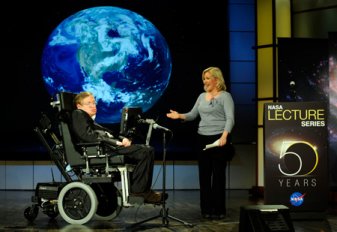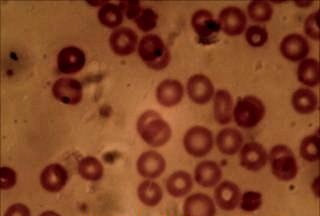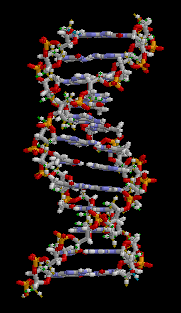 |
Saturday, 11 January 2014
Science will destroy humanity, says team of scientists
Mood:
 d'oh
Topic: Science d'oh
Topic: Science

One of the primary goals of science is to advance knowledge and understanding to improve the human condition, but all too often this noble field of study has devolved into a profit-seeking quest for power, at the expense of mankind. Indeed, the science of technology is perhaps the worst culprit, a team of mathematicians, philosophers and scientists at Oxford University's Future of Humanity Institute is warning. The team, in a forthcoming paper titled, Existential Risk Prevention as Global Priority, says humankind's over-reliance on technology could lead to its demise, and that human beings are facing a risk to our own existence. What's more, the team says humankind's demise is not far off; it could come as soon as the next century. 'Threats we have no track record of surviving... "There is a great race on between humanity's technological powers and our wisdom to use those powers well," institute director Nick Bostrom told MSN. "I'm worried that the former will pull too far ahead." Since our existence on this planet there have been those who have predicted the end of world as we know it, the latest "fad" in this realm being the hoopla surrounding the now-disproven 2012 Mayan prophesies. Still, folks can't seem to let go of the notion that, at some point in our future, life on Earth will cease to exist. From Bostrom's paper: Humanity has survived what we might call natural existential risks for hundreds of thousands of years; thus it is prima facie unlikely that any of them will do us in within the next hundred. This conclusion is buttressed when we analyze specific risks from nature, such as asteroid impacts, supervolcanic eruptions, earthquakes, gamma-ray bursts, and so forth: Empirical impact distributions and scientific models suggest that the likelihood of extinction because of these kinds of risk is extremely small on a time scale of a century or so. In contrast, our species is introducing entirely new kinds of existential risk - threats we have no track record of surviving. Our longevity as a species therefore offers no strong prior grounds for confident optimism. Consideration of specific existential - risk scenarios bears out the suspicion that the great bulk of existential risk in the foreseeable future consists of anthropogenic existential risks - that is, those arising from human activity. Continuing, Bostrom predicts that future technological breakthroughs "may radically expand our ability to manipulate the external world or our own biology." "As our powers expand, so will the scale of their potential consequences - intended and unintended, positive and negative." Bostrom goes onto say that well-known threats like an asteroid strike on the planet, supervolcanic eruptions and earthquakes likely won't threaten humanity in the near future. Even a nuclear explosion won't completely wipe out life; in that event, he says, enough people would survive to rebuild. Rather, it is the unknowns that will wind up as a bane on the existence of humankind. Science has an obligation to serve mankind Not all of the news is bad, Bostrom says. "The Earth will remain habitable for at least another billion years. Civilization began only a few thousand years ago. If we do not destroy mankind, these few thousand years may be only a tiny fraction of the whole of civilized human history," he writes. Learn more: naturalnews.com
Posted by Neil Bartlett DHyp M.A.E.P.H
at 00:01 CET
Updated: Saturday, 11 January 2014 01:38 CET
Saturday, 14 September 2013
Unlocking the secrets of the Elephant Man
Mood:
 not sure
Topic: Science not sure
Topic: Science

The Elephant Man, Joseph Merrick, was an object of curiosity and ridicule throughout his life - studied, prodded and examined by the Victorian medical establishment. Now, 123 years after his death, scientists believe his bones contain secrets about his condition which could benefit medical science today. Joseph Merrick began to develop abnormally from an early age, eventually being gawped at by Victorian circusgoers and examined by inquisitive doctors. The cause of his malformed head, curved spine, "lumpy" skin and overgrown right arm and hand has never been definitively explained. Ironically, it is the medical preservation of Merrick's skeleton that is now causing the greatest problems in unlocking his body's secrets. "The skeleton, which is well over a hundred years old now, is actually very clean," says Prof Richard Trembath, vice-principal for health at Queen Mary University of London, and the custodian of Merrick's body. "This represents a significant problem. On a number of occasions over the years the skeleton has been bleached during the preservation process. Bleach is not a good chemical to expose DNA to. It gives us an added problem in trying to extract sufficient quantities of DNA in order to undertake sequencing." The hope is, though, that DNA can be extracted which will determine once and for all exactly what genetic condition he suffered from. Read More - BBC
Posted by Neil Bartlett DHyp M.A.E.P.H
at 00:01 MEST
Updated: Saturday, 14 September 2013 01:17 MEST
Saturday, 27 April 2013
Stephen Hawking: The universe did not need God to create it
Mood:
 chatty
Topic: Science chatty
Topic: Science

The famous theoretical astrophysicist Stephen Hawking, addressing a large audience at the California Institute of Technology on April 16, said that the Universe did not need a divine creator to bring it into being. Space.com reports that hundreds of people began queuing up for free tickets to the lecture titled "The Origin of the Universe" 12 hours before it began at 8 p.m. local time. By 6 p.m., two hours before the lecture began, the queue had grown to about a quarter-mile long. Organizers had to use a second auditorium and a lawn with a Jumbotron to accommodate the crowd. Professor Stephen Hawking's lecture, which began with a recital of an African creation myth, discussed the philosophical and religious question, "Why are we here?" The theoretical physicist noted that while many still rely on religious explanations which postulate a divine creator of the Universe, scientific evidence does not support the traditional belief that a god or gods created it. The physicist was critical of people and institutions that seek to challenge scientific theories of the origin of the Universe. He asked: "What was God doing before the divine creation? Was he preparing hell for people who asked such questions?” Read more: digitaljournal.com
Posted by Neil Bartlett DHyp M.A.E.P.H
at 00:01 MEST
Updated: Saturday, 27 April 2013 01:01 MEST
Tuesday, 15 November 2011
Synthetic blood created by British scientists
Mood:
 chatty
Topic: Science chatty
Topic: Science

Artificial blood created from stem cells could be tested on Britons within two years. The scientists behind the research, which could provide industrial scale quantities of blood, believe it will transform transfusions by preventing hospital shortages, and save thousands of lives on battlefields and at the scene of car crashes. Heart transplant, bypass and cancer patients would also benefit from having a guaranteed supply of blood on hand for their surgery. Full Story from dailymail.co.uk
Posted by Neil Bartlett DHyp M.A.E.P.H
at 01:01 CET
Updated: Tuesday, 15 November 2011 09:57 CET
Monday, 27 June 2011
Scientists Accurately Predict Age With Saliva Sample
Mood:
 cheeky
Topic: Science cheeky
Topic: Science

Self-conscious about your age? Careful where you spit. UCLA geneticists now can use saliva to reveal how old you are. The June 22 advance online edition of the Public Library of Science (PLoS) ONE publishes the findings, which offer a myriad of potential applications. A newly patented test based on the research, for example, could offer crime-scene investigators a new forensic tool for pinpointing a suspect's age. "Our approach supplies one answer to the enduring quest for reliable markers of aging," said principal investigator Dr. Eric Vilain, a professor of human genetics, pediatrics and urology at the David Geffen School of Medicine at UCLA. "With just a saliva sample, we can accurately predict a person's age without knowing anything else about them." Full Story from sciencedaily.com MP Comment: This brings a whole new meaning to the criminal fraternity of "keeping your mouth shut". 
Posted by Neil Bartlett DHyp M.A.E.P.H
at 05:40 MEST
Friday, 22 April 2011
Top astronomers warn the world could end within 90 years
Mood:
 happy
Topic: Science happy
Topic: Science


The end of the world is nigh. That's what top astronomers will claim during a debate to end the 2011 Edinburgh International Science Festival. Lord Martin Rees, the Astronomer Royal, believes civilisation has only a 50 per cent chance of surviving to 2100 without suffering a man-made catastrophe. And the Astronomer Royal for Scotland, Professor John Brown, has an equally bleak outlook, fearing a random event from outer space is the most likely cause of our demise. They will take to the stage to put forward their stark predictions in the discussion "Fire in the Sky: Cosmic Threats to Earth". Full Story from news.stv.tv
Posted by Neil Bartlett DHyp M.A.E.P.H
at 16:56 MEST
Thursday, 17 June 2010
How Frozen Humans Are Brought Back
Mood:
 chatty
Now Playing: TalkSport
Topic: Science chatty
Now Playing: TalkSport
Topic: Science

By Zoё Macintosh | LiveScience.com Yeast and worms can survive hypothermia if they are first subjected to extreme oxygen deprivation, a new study finds. The results could explain a long-held mystery as to how humans can be brought back to life after "freezing to death," the scientists say. The study uncovered a previously unknown ability of organisms to survive lethal cold by temporarily slowing the biological processes that maintain life. "We have found that extension of survival limits in the cold is possible if oxygen consumption is first diminished," said researcher Mark B. Roth of Fred Hutchinson Cancer Research Center in Seattle, Wash. One form of "forced hibernation," the behavior known as "suspended animation," literally involves the sudden halting of chemical reactions in the body due to the lack of oxygen. A 10-hour time lapse video of a garden worm embryo in the process of developing into a full-fledged baby worm showed a rapid process of cell division freeze to a stop upon the environment’s oxygen removal. That same cell division resumed unaffected two and a half hours after oxygen was restored. When subjected to literally freezing temperatures, the embryos of yeast and garden worms do not live, researchers found. A full 99 percent of those in the experiment died after 24 hours of exposure to temperatures just above freezing. But, when first deprived of oxygen in the manner described above, 66 percent of the yeast and 97 percent of the garden worms survived. Upon re-warming and reintroduction of oxygen, the "two widely divergent organisms" reanimated and showed normal life spans, said scientists in a statement. Improved understanding of the connection between low oxygen and low temperature could lead the way to extending the shelf-life of human organs for transplantation, Roth said. It could also explain what has been an unsolved mystery: reported instances of humans "brought back to life" after succumbing to hypothermia. "There are many examples in the scientific literature of humans who appear frozen to death. They have no heartbeat and are clinically dead. But they can be reanimated," Roth said. "Similarly, the organisms in my lab can be put into a state of reversible suspended animation through oxygen deprivation and other means. They appear dead but are not." Documented cases of humans successfully revived after spending hours or days without a pulse in extremely cold conditions first inspired Roth to study the relationship between human hypothermia and his own research in forced hibernation. In the winter of 2001, the body temperature of Canadian toddler Erica Norby plunged to 61 degrees Fahrenheit (16 degrees Celsius) as she lay for hours in below-freezing weather after wandering outside wearing only a diaper. Apparently dead, she recovered completely after being re-warmed and resuscitated.
The same curious fate befell Japanese mountain climber Mitsutaka Uchikoshi in 2006, who was discovered with a core body temperature of 71 degrees F (22 degrees C) after 23 days after falling asleep on a snowy mountain. "We wondered if what was happening with the organisms in my laboratory was also happening in people like the toddler and the Japanese mountain climber. Before they got cold did they somehow manage to decrease their oxygen consumption? Is that what protected them?" Roth said. "Our work in nematodes and yeast suggests that this may be the case, and it may bring us a step closer to understanding what happens to people who appear to freeze to death but can be reanimated." Oxygen deprivation’s protective effect comes from the way it arrests biological processes before dangerous instabilities can develop. When reanimated, the processes continue where they left off, with no sign of disruption having occurred. "When an organism is suspended its biological processes cannot do anything wrong," Roth said. "Under conditions of extreme cold, sometimes that is the correct thing to be doing; when you can’t do it right, don’t do it at all." The ultimate goal of such research is to "buy time" for patients in physical shock, such as after heart attacks and severe blood loss, increasing their chances of survival by preserving them until they can reach medical care, researchers said in a statement. Other forms of forced hibernation include exposure to chemical agents like hydrogen sulfide.
Posted by Neil Bartlett DHyp M.A.E.P.H
at 00:50 MEST
Tuesday, 8 June 2010
Brain scans being misused as lie detectors
Mood:
 d'oh
Now Playing: MPR
Topic: Science d'oh
Now Playing: MPR
Topic: Science
Measures are needed to stop brain scans being misused by courts, insurers and employers, experts have warned. Some research suggests the technique can show whether a person is lying if certain areas of the brain "light-up". At least one US company is offering scans to employers recruiting staff but American courts have already rejected attempts to use them in legal cases. The University of Edinburgh's Burkhard Schafer said there were issues over privacy and reliability of technology. The subject is being discussed by experts from around the world at a conference at the Institute of Advanced Studies in Glasgow. 'The next frontier' Attempts have been made to use magnetic resonance imaging scans as lie detectors or to demonstrate mental health problems in more than 90 capital punishment cases in the US, as well as in other proceedings in Europe and Asia.
While they have been rejected in many cases, scan results have sometimes been accepted as evidence. Mr Schafer, co-director of the SCRIPT Centre for Research in Intellectual Property and Technology at the University of Edinburgh's school of law, said the UK had to consider how to prevent MRI scans being misused - and how to protect people's privacy. "After data mining and online profiling, brain imaging could well become the next frontier in the privacy wars. "The promise to read a person's mind is beguiling, and some applications will be greatly beneficial. "But a combination of exaggerated claims by commercial providers, inadequate legal regulation and the persuasive power of images bring very real dangers for us as citizens." He added: "As soon as public awareness increases there will be interest from everyone from daytime entertainment programmes to employers and the legal system. "It would be sensible to be prepared." 'Powerful and compelling' Mr Schafer added there was also a chance employers could seek to use scans to test the honesty of an individual's CV - or by insurance companies.
"There should probably be a moratorium for insurance companies, as has happened over the use of genetic test information." But he warned MRI scans should not be used in this way: "The science isn't there." Joanna Wardlaw, professor of applied neuroimaging at the University of Edinburgh, said brain scans could show differences between groups who thought differently in a research setting. But she added: "It's very, very difficult to apply the results of an individual's scan in situations such as where there is a threat of legal action. "Images are powerful and compelling, and people are likely to accept them. But there needs to be much more understanding of what the limitations are." Professor Geraint Rees, director of the University College London's Institute of Cognitive Neuroscience, said: "I'm concerned about the potential use of scans that are starting to emerge now, but whether we need to go down the road of legal regulation, I'm not so sure about. "But we do need to have an informed debate." Source: BBC
Posted by Neil Bartlett DHyp M.A.E.P.H
at 00:39 MEST
Updated: Tuesday, 8 June 2010 00:40 MEST
Wednesday, 26 May 2010
First human infected with computer virus
Mood:
 d'oh
Now Playing: MPR 2
Topic: Science d'oh
Now Playing: MPR 2
Topic: Science
A British scientist says he is the first man in the world to become infected with a computer virus. Dr Mark Gasson from the University of Reading contaminated a computer chip which was then inserted into his hand. The device, which enables him to pass through security doors and activate his mobile phone, is a sophisticated version of ID chips used to tag pets. In trials, Dr Gasson showed that the chip was able to pass on the computer virus to external control systems. If other implanted chips had then connected to the system they too would have been corrupted, he said.
Posted by Neil Bartlett DHyp M.A.E.P.H
at 17:28 MEST
Sunday, 2 August 2009
Kirlian Camera can see Human Soul
Mood:
 chatty
Topic: Science chatty
Topic: Science
A wonder device can see the soul of a dead man pass away… or at least that’s what the inventor claims. A publication of the popular Russian tabloid Life.ru gives a dramatic account of the experiments of an inventor from St Petersburg, who has created a device able to see human aura. Accompanied by pictures suspiciously reminiscent of a series of thermal images of a woman at different temperatures, the report claims they are made with a special “gas discharge camera” built by Konstantin Korotkov, a professor at the Research Institute of Physical Culture and State University of Information Technologies, Mechanics and Optics. The paper goes on to say that the device can register the circumstances of death, differentiating between a victim of a violent crime and a person who died quietly in bed. It also registers the changes in aura presumably made by a strong psychic working on somebody. Disregarding the glib comparison of the religious term “soul” with the new age “aura”, the claims – they can hardly even be expected to get support in peer-reviewed scientific papers in our opinion – prompted RT to take a little investigation into the wonder device. 
Kirlian camera
The instrument, which was presented to us as something involved in the study of death, turned out to have been designed as a medical diagnosis tool. With about 15 years of development behind it, its inventor claims that it’s an affordable early-diagnosis tool, capable of identifying any disease, from an ulcer to a brain tumor, by scanning irregularities in an aura. Sort of a spiritual healer in metal and plastic, available to everyone for a small fee. No mystical stuff here – a patient can see his own aura on the computer screen, all thanks to the “gas discharge visualization” or GDV. The spiffy name is actually modern application of a well-known phenomenon called Kirlian effect, named after Semyon and Valentina Kirlians, a Russian couple who greatly contributed to popularizing it back in 1960s. Kirlian experimented with photographing objects with high voltage applied to them. The strong electric field causes faint corona discharges around the edges, which can even be seen with the naked eye. The visual appeal of the effect won the hearts of mystic-oriented people. Starting with Kirlians themselves, many people claimed that the electrical phenomena was actually a way to visualize otherwise invisible auras of objects. Korotkov is one of these claimants. According to him, corona discharges around fingertips, which his GDV cameras cause, have information about one’s physical condition and this information can be used for diagnosis. The claim was never confirmed by clinical tests, but it didn’t prevent the device from becoming the cornerstone of a widespread business. With different models costing from $4,500 to $13,000, and official dealers all across Russia and abroad, the invention seems to generate enough cash for Korotkov to travel the world and promote his product. Not for diagnosis Meanwhile, critics openly call the GDV “quackery”. Back in 2002, when the device drew the attention of the Russian media, RTR TV channel (now called Rossiya) did an investigation of their own, producing a 20-minute-long report. They revealed that, in the testing of a GDV scanner done in the Military Medical Academy, one of the strong-points trumpeted by the producer was actually its ability to kill bacteria on hands, which it successfully did. It was never used for diagnosis of any kind. Another selling point – the testing of the device on Russian sportsmen – showed that readings of the device may vary slightly with the state of mind of the subjects. As it does with variations in the environment, like a change of air temperature or humidity. In an interview given to a newspaper two years ago Korotkov said his invention was like a knife: it could be used for good or for bad purposes. Indeed, the beautiful Kirlian effect can be used for dubious intentions, or for inspiring works of art like those of photographer Robert Buelteman here. As far as public science goes, there is no other application for it. Source: russiatoday.com
Posted by Neil Bartlett DHyp M.A.E.P.H
at 12:22 MEST
Updated: Sunday, 2 August 2009 12:54 MEST
Newer | Latest | Older
|
| « |
April 2024 |
» |
 |
| S |
M |
T |
W |
T |
F |
S |
|
1 |
2 |
3 |
4 |
5 |
6 |
| 7 |
8 |
9 |
10 |
11 |
12 |
13 |
| 14 |
15 |
16 |
17 |
18 |
19 |
20 |
| 21 |
22 |
23 |
24 |
25 |
26 |
27 |
| 28 |
29 |
30 |
|











